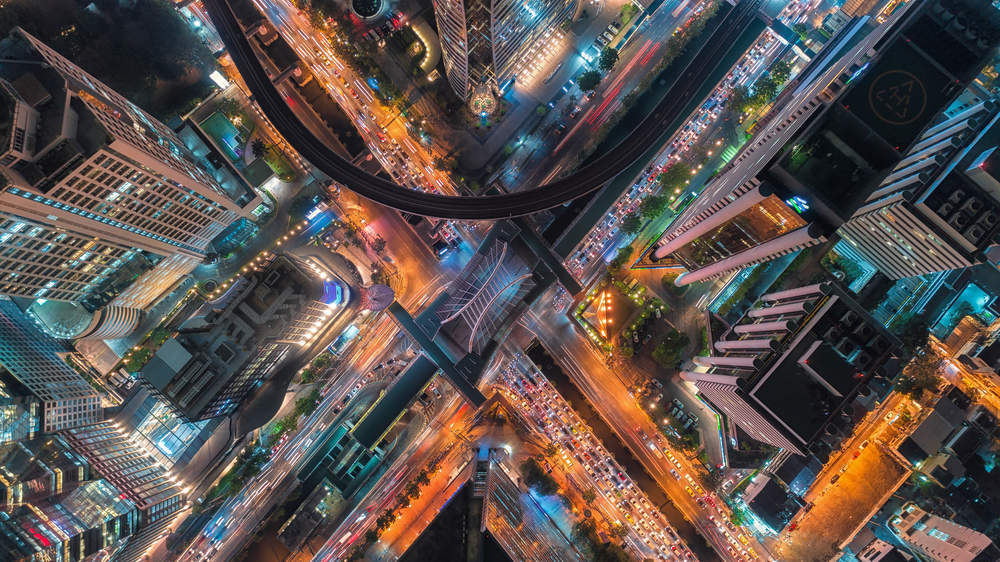Many retailers are closing down high street stores or have gone out of business altogether because their business models no longer work.
High streets now tend to have some empty spaces, but they are far from losing relevance entirely. While online and mobile shopping continues to grow, people still like to visit local stores — but now they expect things like location-specific offers mobile checkouts.
In coming years stores will increasingly combine functions to attract customers — incorporating a cafe or a bar.
Rather than just selling things they will provide spaces for the local community while also acting as pick-up points for online orders.
Checkout-free concepts, convenience stores and kiosks
Some stores will be completely checkout-free or will look like a collection of vending machines, while the more premium ones will feature staff with expert advice combined with the latest digital signage, interactive kiosks and smart shopping carts.
Convenience stores will thrive while large superstore formats will gradually be phased out in locations where rent and overhead costs are high. Furniture and automobile retailers will no longer require large showrooms but will increasingly offer augmented and virtual reality experiences in smaller store formats and on their online and mobile platforms.
How well do you really know your competitors?
Access the most comprehensive Company Profiles on the market, powered by GlobalData. Save hours of research. Gain competitive edge.

Thank you!
Your download email will arrive shortly
Not ready to buy yet? Download a free sample
We are confident about the unique quality of our Company Profiles. However, we want you to make the most beneficial decision for your business, so we offer a free sample that you can download by submitting the below form
By GlobalDataIndependent stores, pop-ups and market-style concepts are emerging as shoppers look for greater individualism and shopping areas aim to differentiate themselves to attract greater footfall, which is not possible if the same brands are featured in every local high street.
Oxford Street has already begun a radical change
We just need to look at London’s Oxford Street to see how radical changes are already happening. BHS, a major department store, failed to upgrade its store over decades and has finally shut down.
The empty building in this prime retail location will soon feature a mix of smaller retail outlets, bars and entertainment. The basement is being transformed to house the UK’s biggest food hall, and a ‘crazy golf’ experience will be located on the first floor.
Parts of Oxford Street itself will finally be pedestrianised to create a more relaxed and arty atmosphere.
Just a few streets down on Bird Street, a ‘smart street’ has been created as a tech-friendly and traffic-free shopping destination. It features pioneering pop-ups and ethical brands, and stores are equipped with the latest technologies such as smart mirrors and mobile payment solutions.
The aim is to create a high street with a specific identity as a health-conscious and innovative destination.
High streets need to match local population needs
While some high streets will naturally evolve as gentrification leads to pound stores and betting shops being replaced with fancy coffee shops in popular areas, others require investment, direction and support from local councils and business organisations.
In small and medium-sized towns and cities especially, the number of empty stores is increasing; it takes time before they are replaced with more innovative concepts, and these may vary greatly based on the local population.
Since not everyone can afford the latest designer fashion or even pay for cinema tickets, some high streets will need to remain cheap but appealing in order to survive.
They may include street art performances, food stalls and independent stores that sell anything from standard groceries and electricals to ethnic products, affordable fashion and second-hand goods.
Not everything will be high-tech by 2025, but even most of the less popular high streets will feature at least some self-service stores, smart vending machines, kiosks and pick-up counters for online orders.
Any category of high street will offer some cafes, restaurants and other recreational facilities so that the focus will no longer be on shopping alone, but also on hospitality, entertainment and various practical functions.







